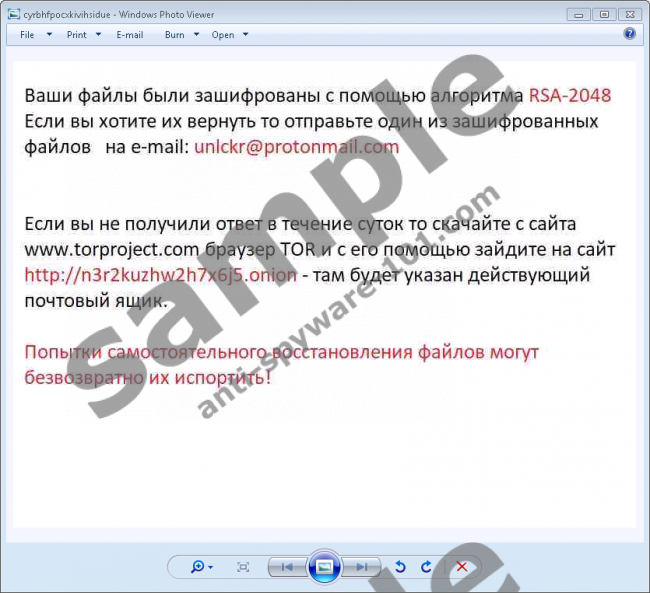What is Gedantar Ransomware?
If you suddenly face a window via which you are being introduced to Gedantar Ransomware, there is a possibility that your personal files have been encrypted. Our research team at Anti-Spyware-101.com has not found a fully-functional sample of this threat yet, and that is because it appears to be incomplete. Why did the creators unleash this half-finished infection? Most likely, they have not done it yet, but malware researchers have managed to unveil this threat. Unfortunately, it is impossible to say when – or if – this infection will be fully completed. Hopefully, it stays helpless forever, but we cannot count on that. Whether or not you have faced the threat, there are things you need to learn about it, including protection against it, and, of course, removal. We are hopeful that no one will need to worry about deleting Gedantar Ransomware from their Windows operating systems, but since we cannot predict that, removal instructions have been created to assist those in need.
How does Gedantar Ransomware work?
Since Gedantar Ransomware has not been released yet, the distribution plans remain a mystery. Of course, some methods of distribution are more common than others, and so we can discuss that. Did you know that most ransomware infections are spread via spam emails? These emails contain bogus messages, allegedly sent by post, airline companies, banks, and similar entities to make the victim trust the content that they are exposed to. For the most part, corrupted attachments are used to infiltrate malware, but malicious links could be used as well. Gedantar Ransomware could also be spread using unsecure RDP connections or malware bundles. Overall, the threat is meant to slither in without anyone’s notice. Its activity is silent as well. If you are not quick to delete the infection, it executes malicious commands and starts the encryption of files. Personal photos, media files, and documents are likely to be targeted by this vicious infection. At the moment, it is not known if a unique extension would be added to the names of corrupted files, but that is possible. It is notable that, in some cases, file encryptors are capable of renaming files as well.
The ransom note represented by Gedantar Ransomware is its second most important tool. The most important one, of course, is the encryption key which allows cyber criminals to take the files hostage. Without the random note file, however, they would not be able to represent the demands. According to our research, the infection creates the {random name}.jpg file to introduce users to unlckr@protonmail.com (an email address) and n3r2kuzhw2h7x6j5.onion (a website that can be reached via the Tor browser). It is suggested that you can learn all about the decryption of your files by communicating with cyber criminals. Needless to say, that could be extremely dangerous. At best, you would be introduced to instructions on how to pay the ransom, but you could also be exposed to malware. It is unknown how big the ransom that the creator of Gedantar Ransomware wants victims to pay is, but even if it is small, paying it is not recommended. More likely than not, users who pay the ransom will not get their files decrypted.
How to delete Gedantar Ransomware
You need to remove Gedantar Ransomware regardless of what happens. It deserves elimination regardless of whether or not it encrypts files or decrypts them after the payment of the ransom, paying which, as we discussed already, is not recommend. The removal of this malicious infection is not your only problem because, obviously, you are also dealing with a problem of weak security. You need to make sure it is strengthened, and it is best to install a trustworthy and legitimate anti-malware program to take care of that. It also can automatically delete Gedantar Ransomware and other active infections, which is why using this program is our recommendation. Is it possible to erase this malware manually? You might be able to handle the task if you know where to find the .exe file. Note that the guide below will not help you if you cannot identify the malicious process and file. Also, this guide works with the current version of the threat. If anything changes, we will update this report. You can also contact us via the comments section if you have questions or want to discuss the infection further.
Removal Guide
- Simultaneously tap Ctrl+Alt+Delete and select Start Task Manager.
- Click the Processes tab and right-click the malicious {random name} process.
- Select Open File Location to access the malicious {random name}.exe file.
- Select the process and click End process, and then Delete the .exe file.
- Delete all copies of the ransom note file, {random name}.jpg.
- Run a full system scan using a legitimate malware scanner to check for leftovers.
100% FREE spyware scan and
tested removal of Gedantar Ransomware*
Stop these Gedantar Ransomware Processes:






0 Comments.